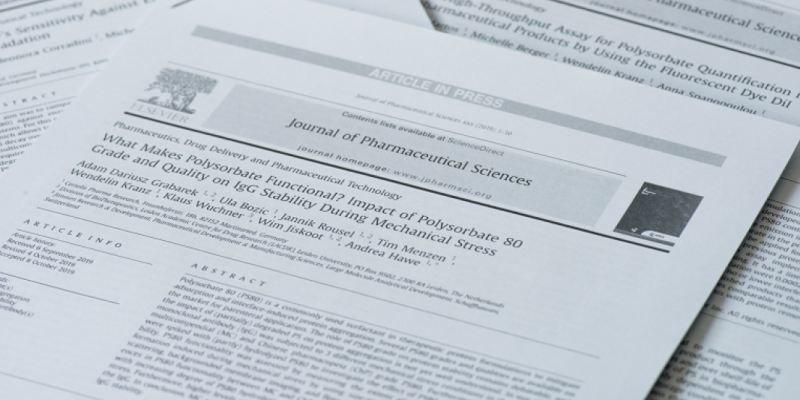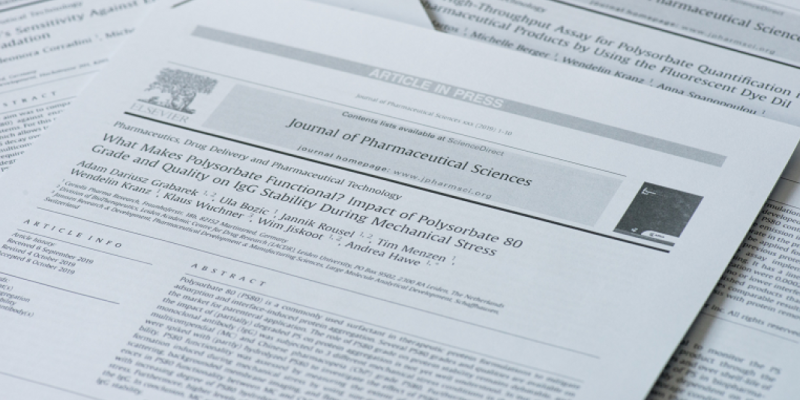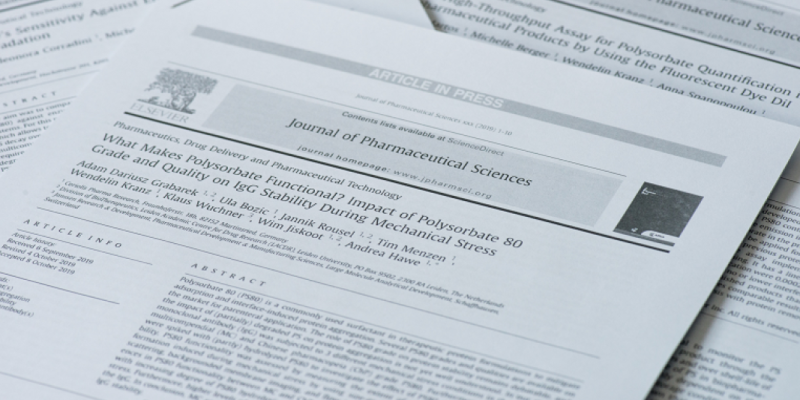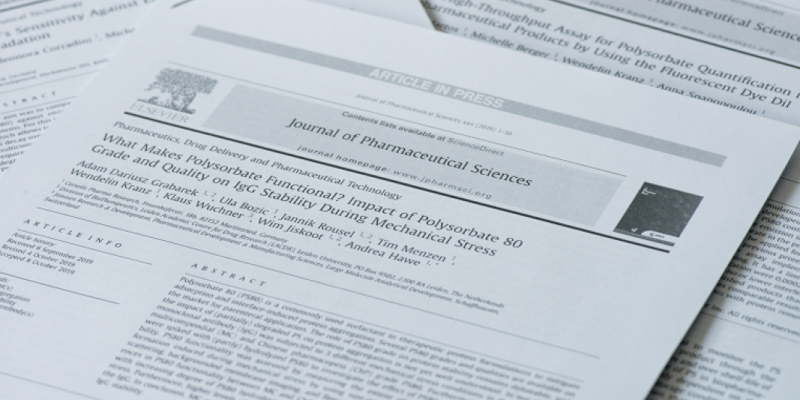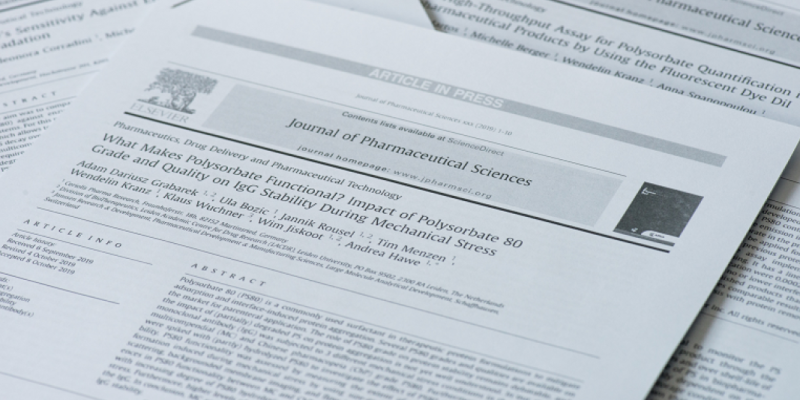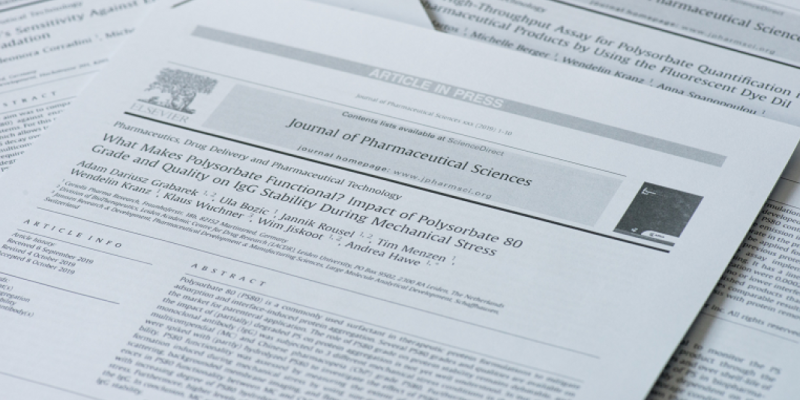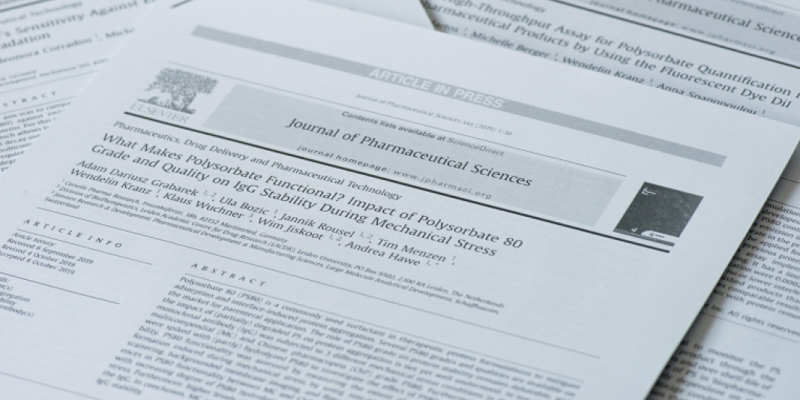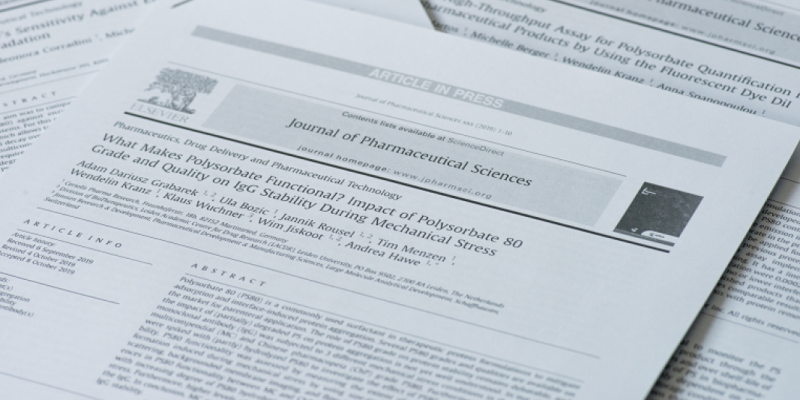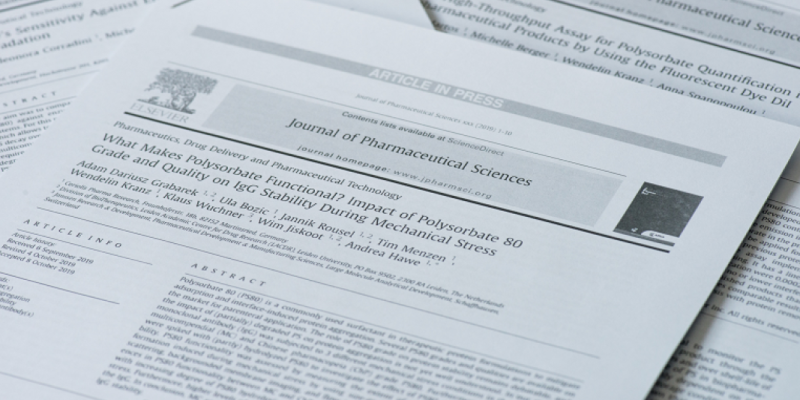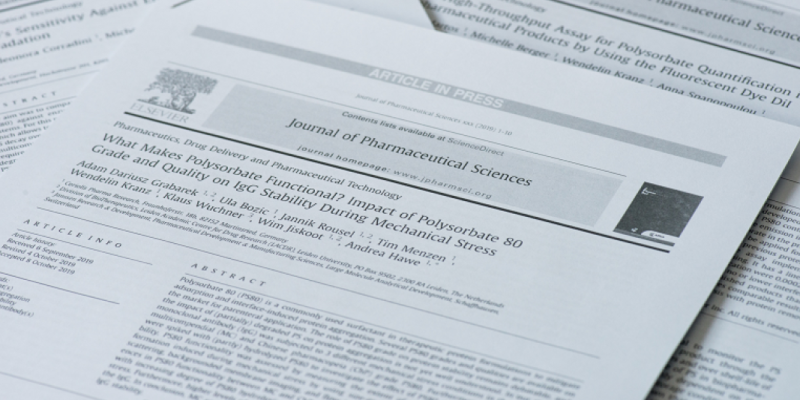Taking subvisible particle quantitation to the limit: Uncertainties and statistical challenges with ophthalmic products for intravitreal injection.
J Pharm Sci. 2019 Nov
Subvisible particles are a critical quality attribute of pharmaceutical products. The reliability of particle quantitation increases with the number of particles in the analyzed sample volume. However, for analyses of low-volume drug products, such as ophthalmic products for intravitreal injection, or biopharmaceuticals in general, sample volumes as small as possible should be used to avoid pooling and consequently, the contamination with foreign particles. The aim of our study was to evaluate the variability of particle concentrations obtained by light obscuration measurements in order to define the minimum required analyzed sample volume to achieve statistically meaningful results by using conditions that are practically feasible. Statistical evaluation suggests that for particle concentrations close to a pre-defined limit, large sample volumes (a multiple of typical intravitreal product volumes) would be required for a high probability to correctly classify samples with respect to the pre-defined limit. Below a minimum analyzed volume, even a measurement result of 0 particles does not allow to conclude compliance with the respective particle concentration limit with sufficient certainty. A small analyzed volume could be justified as long as the measurement uncertainty remains acceptable compared to the pre-defined limit.
J Pharm Sci. 2019 Nov

